In early 2021, there was intense pushback from nature groups and the general public, after HDB unveiled housing plans for the 33-hectare Ulu Pandan site where Dover Forest is located. While the development has been zoned for housing since 2003, authorities only announced plans to build BTO flats there in December 2020.
By July 2021, HDB reviewed their concerns and said that 11-hectare (one-third of the land) on the east side of Ulu Pandan would be set aside for housing (to be launched in H2 2022). The agency will also set aside about 5-hectare of greenery on the eastern side with a sizeable nature park to the west.
This meant that the development of the western half of the zone (that stretch you see beyond Dover MRT station to Clementi Road) will be put off until further review.
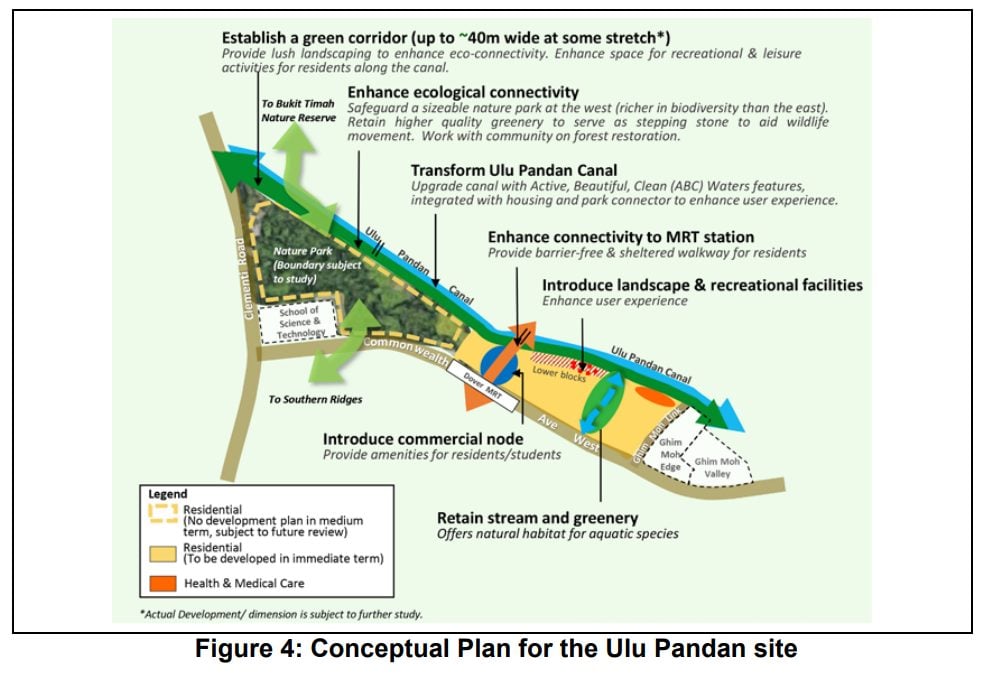
Since then, there’s been increasing interest in environmental studies conducted for subsequent housing projects in Singapore. These “studies” are extremely scientific and detailed, but would be worth reading if you plan on settling down in the neighbourhood (either when a BTO project is launched there or you are house-hunting nearby).
Recently, HDB completed feedback sessions for the environmental studies on Yishun’s Miltonia Close and Woodlands North, which are primarily zoned for residential development in the Urban Redevelopment Authority (URA)’s Master Plan since 2003.
The in-depth studies were conducted to assess the expected impact of development on the natural and built environment. They are also part of HDB’s planning and development process to meet public housing needs.
Usually conducted by specialised agencies and independent contractors, the process is established with a holistic, evidence-based, and methodological approach that balances Singapore’s developmental needs with its environmental goals.
Before a project can proceed, the study findings and feedback are then carefully considered together with other government agencies, such as URA and National Parks Board (NParks).
Environmental Baseline Study on Miltonia Close
An environmental baseline study (EBS) for Miltonia Close (along Yishun Avenue 1) was carried out from December 2019 to July 2020 to provide information on its flora and fauna’s existing biodiversity and characterise hydrological conditions on-site.
The full report of the EBS, finalised in February 2021, can be accessed here.
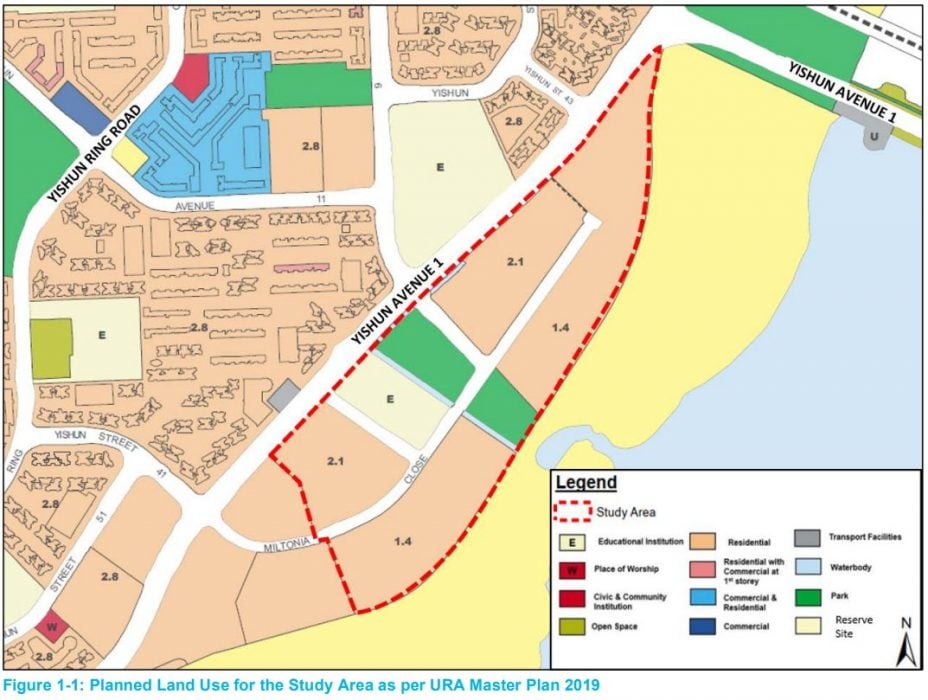
It was found that Miltonia Close is not an ecologically significant site as it does not support high native species richness in a local context. The site primarily consists of widespread vegetation. Most of its fauna species can also be commonly found in other areas of Singapore.
However, some findings show that:
- The abandoned land forest and swampy scrubland within the Miltonia Close support several flora species of conservation significance, including the critically endangered Bintangau laut (Calophyllum inophyllum) and vulnerable Buas buas (Premna serratifolia).
- Bamboo bats (Tylonycteris spp.) reside in one of the bamboo clusters in the northern part of the site. This genus of bats may include the nationally critically endangered lesser bamboo bat, T. fulvida.
- The natural stream running through the swampy scrubland supports several stream-dependent faunal species, such as the critically endangered red-tailed pipe snake (Cylindrophis ruffus) and the endangered buffy fish owl (Ketupa ketupu).
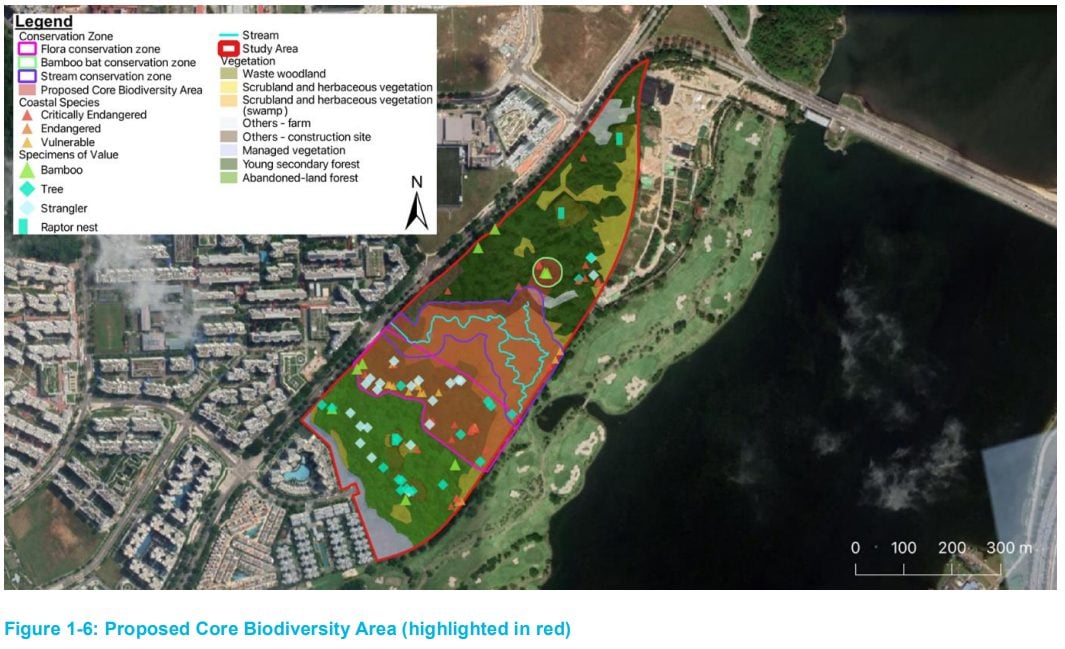
Proposed Core Biodiversity Area
A core biodiversity area was marked out for conservation based on the findings.
The proposed area includes the riparian habitats flanking the bamboo cluster with the bamboo bats, and a portion of the abandoned-land forest closest to the stream.
It was recommended for a contiguous conservation zone to be achieved by connecting the stream, abandoned-land forest, and bamboo cluster habitats. This would preserve a higher habitat quality compared to retaining fragmented forest patches.
Refined Conceptual Land Use Plan for Miltonia
HDB carried out engagement sessions with Nature Group representatives, NParks and URA to assess the EBS report findings and identify the more critical areas to conserve. The EBS report was also published online to gather public feedback.
The development plans for Miltonia Close were then refined by taking into consideration the study findings as well as the feedback from Nature Groups and the public. Below are the key features of the Conceptual Land Use Plan for Miltonia Close:
- A nature park of 6.4 hectares, approximately 2.5 times the park space safeguarded in the Master Plan, will be retained.
- Nature ways, which are routes planted with specific trees and shrubs to facilitate the movement of animals between two green spaces, will be introduced along Yishun Ave 1 and the proposed road on the eastern boundary of Miltonia Close.
- The bamboo bats from the affected bamboo roost site in the north will be translocated to retained bamboo clusters in the nature park.
- Young saplings of affected conservation significant plant species will be translocated where possible.
- The proposed road will be shifted to the edge of Miltonia Close to avoid affecting the retained nature park.
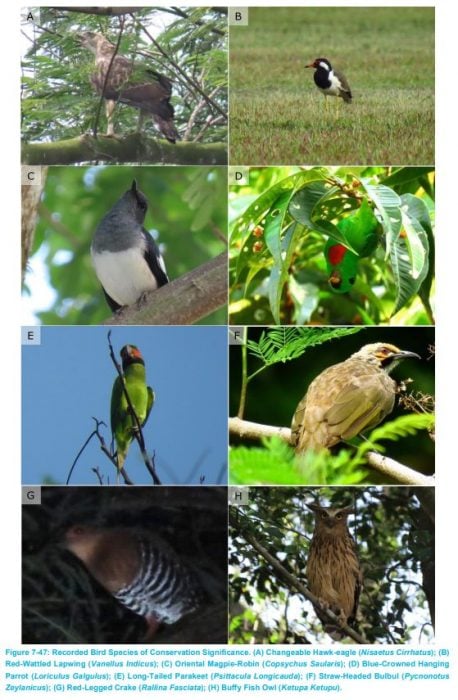
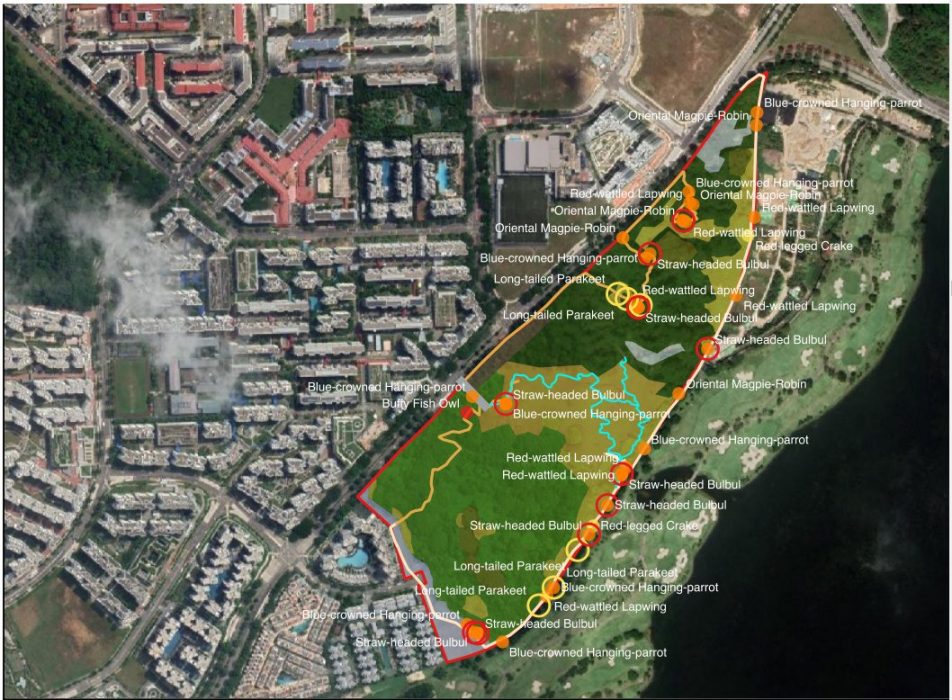
Environmental Impact Study on Woodlands North
Besides Yishun’s Miltonia Close area, another Environmental Impact Study (EIS) was done between March 2018 and January 2019 in a part of Woodlands North, near Admiralty Park. This zone is near the Singapore-Johor Causeway.
The finalised report of the EIS was published in October 2021 and can be found here.
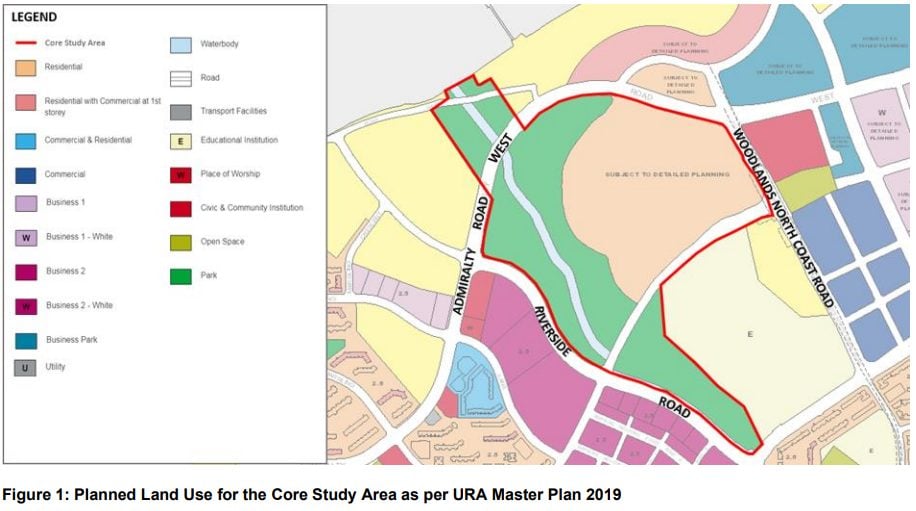
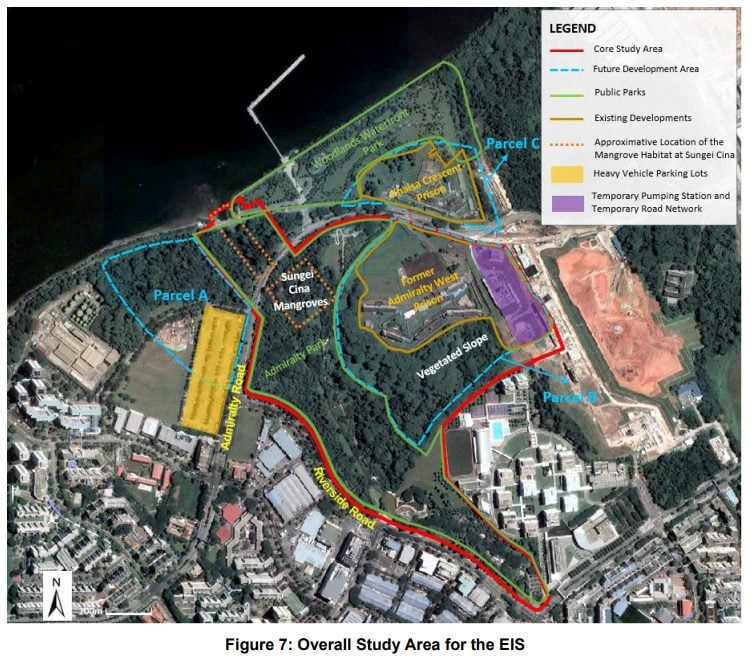
Let us now look at some of the more interesting findings:
- The mangrove/coastal forest within Admiralty Park and the native-dominated freshwater swamp forest at the southwestern corner of the proposed residential use area have high ecological value.
- Out of the 475 vascular plant species documented in the Woodlands North site, 162 species are of varying degrees of conservation significance. They are mainly concentrated at the southwestern corner of the area proposed for residential use.
- 14 out of the 246 fauna species recorded are of varying degrees of conservation significance, and they consist of one odonate (eg. damselflies or dragonflies), two butterflies, two reptiles, and nine bird species.
- Although northern Admiralty Park was recorded to have the highest fauna richness with 37 species, there is no clear hotspot for fauna species of conservation significance in the Woodlands North site.
Proposed Core Conservation Area
As a result of the findings, a core conservation area (CCA) of 4.39 hectares was recommended. This area includes the native-dominated freshwater swamp forest, the native-dominated low secondary forest, and the freshwater stream that feeds the native-dominated freshwater swamp forest.
The proposed CCA has a high concentration of conservation significant flora species and significant large trees. It also includes a 15-metre buffer to protect the retained habitats from disturbances.
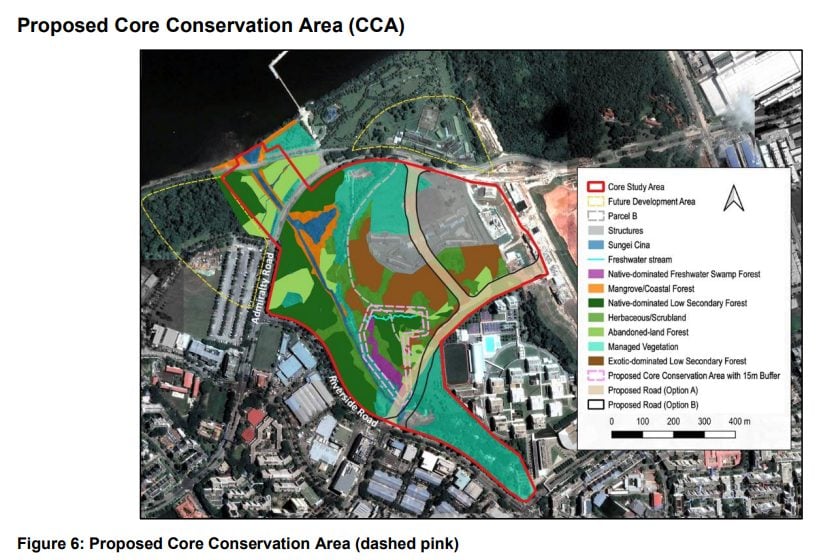
Recommended Key Mitigation Measures
Numerous measures were recommended in the study to mitigate the impact of development on the Woodlands North site. Here are just a few of them:
- Implement bird-friendly building design.
- Execute tree-felling works outside of bird-breeding and nesting season, if possible.
- Provide soil erosion control measures to ensure that slope stabilisation and grading works will not impact the CCA.
- Execute fauna response and rescue protocol when fauna is found on site.
- Conduct regular inspections on contractors’ compliance to reduce fauna mortality and negative impacts to surrounding habitats.
Revised Conceptual Land Use Plan for Woodlands North
To co-create solutions to address the various concerns in Woodlands North, HDB carried out engagement sessions with Nature Group representatives, together with NParks, URA, JTC and the Public Utilities Board (PUB). The EIS report was also published online to gather public feedback.
Considering the study findings, suggested mitigation measures, and feedback from Nature Groups and the public, a revised conceptual land use plan was put together for Woodlands North. The plan features the following four key components:
- The recommended CCA of 4.39 hectares and its 15-metre buffer will be retained.
- The road between Riverside Road and Woodlands North Coast Road will be aligned to avoid the CCA.
- The loss in residential land due to the retention of the CCA will be made up for by converting approximately 1.39 hectares of managed vegetation at Admiralty Park North for residential use.
- A 16-metre wide linear park will be retained to serve as an additional buffer between the CCA and the future housing development to extend the transitional space between wildlife and residents.
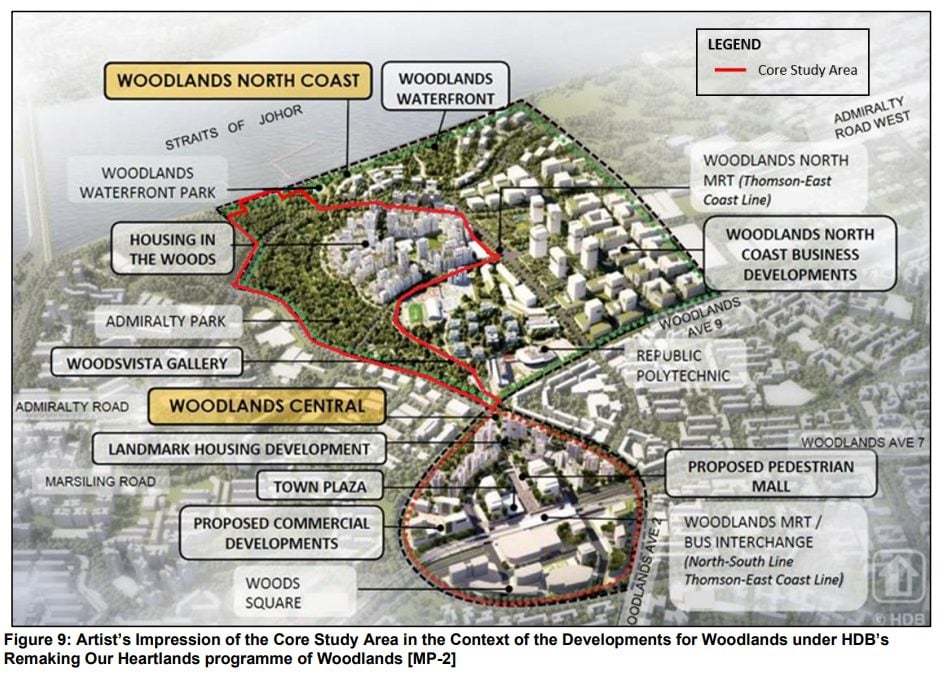
–
Are you intrigued by the biodiversity studies in Miltonia Close and Woodlands North? Let us know in the comments section below or on our Facebook post.
If you found this article helpful, check out Why cultivating simple green habits can make a real difference and Singapore’s Long-Term Plan Review for the next 50 years and beyond.
Looking for a property? Find the home of your dreams today on Singapore’s fastest-growing property portal 99.co! If you would like to estimate the potential value of your property, check out 99.co’s Property Value Tool for free. Also, don’t forget to join our Facebook community page! Meanwhile, if you have an interesting property-related story to share with us, drop us a message here — and we’ll review it and get back to you.
The post Insights from HDB’s environmental studies on Yishun’s Miltonia Close and Woodlands North appeared first on 99.co.

